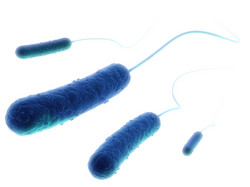Improving protein expression in bacteria
Eukaryotic cells receive and process signals from their environment through integral membrane proteins (IMP). IMPs are notoriously difficult to study due to complications in obtaining adequate amounts of stable and functional proteins. G protein-coupled receptors (GPCRs), one of the largest IMP families, is also an important class of drug targets in pharmaceutical discovery. Escherichia coli are widely used as hosts for heterologous protein expression but the efficacy and yield of GPCRs is very low and unsuitable for protein characterisation studies. The EU-funded BIOIMPROVE (Lessons from the genome of Escherichia coli: understanding heterologous expression of eukaryotic internal membrane proteins in bacterial cells) project aimed to address this limitation and investigate the processes that influence the biogenesis of IMPs in bacteria. The work focused on genes that regulate the heterologous production of eukaryotic IMPs. Scientists employed a system based on the enrichment of cells expressing high levels of functional GPCRs and utilised bacterial strains mutated in various factors. Their experiments identified certain bacterial variants with enhanced GPCR expression. Genetic analysis of these variants showed a nucleotide substitution in the rpoD gene, which encodes the sigma 70 subunit of the RNA polymerase. During exponential growth, this factor targets the polymerase to genes that are required for normal growth. The identified sigma mutant suggests that enhanced transcriptional activation may be the answer in diminishing the toxic effects incurred during receptor expression. Gene expression analysis revealed significant pathway alterations in rpoD mutants compared to wild-type bacteria. BIOIMPROVE results provide a deeper understanding of the process of heterologous expression of IMPs in bacteria, a stepping stone for optimising GPCR production. This is of paramount importance for conducting structural studies and delineating the function of these pharmaceutical targets.







